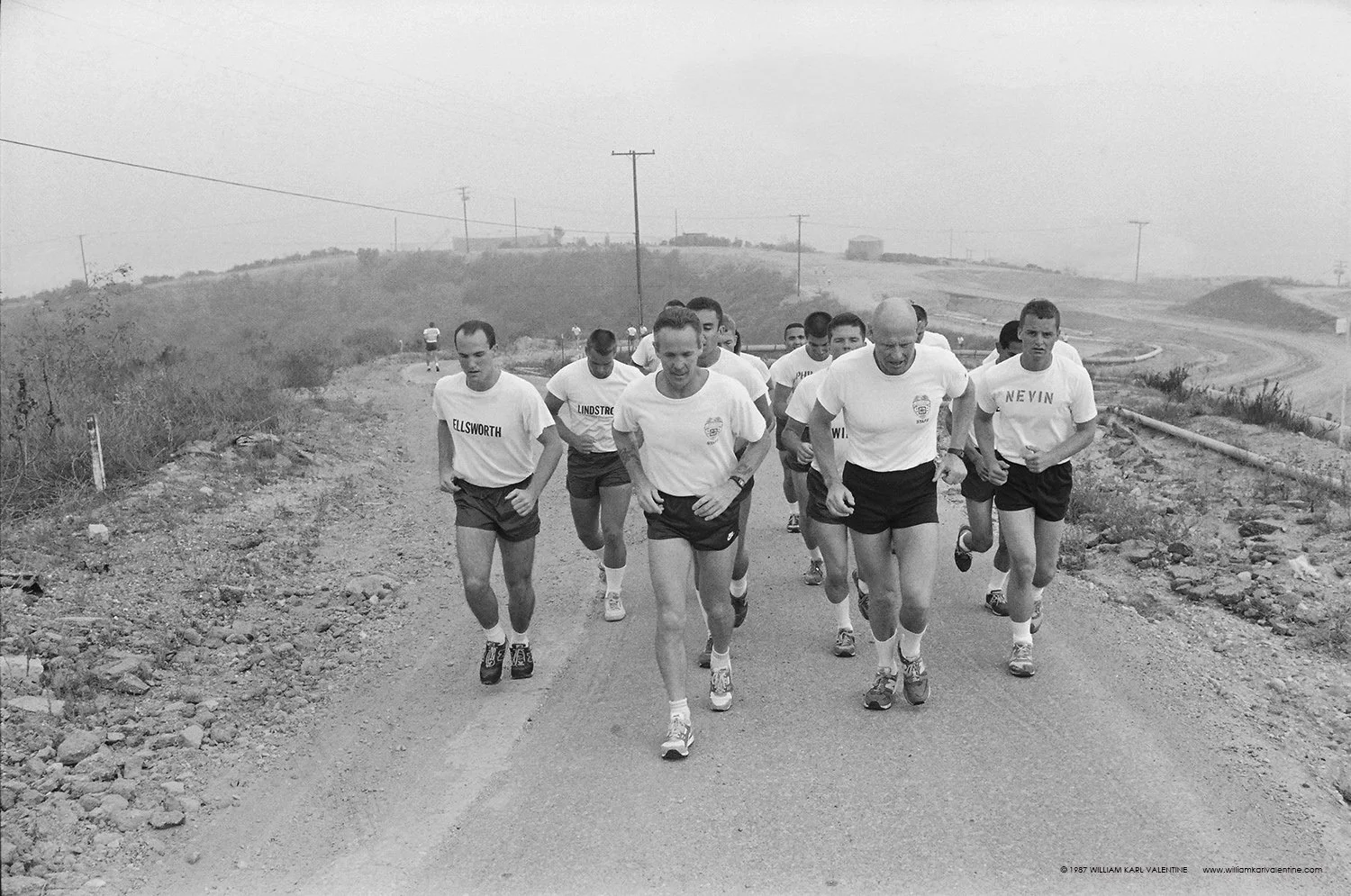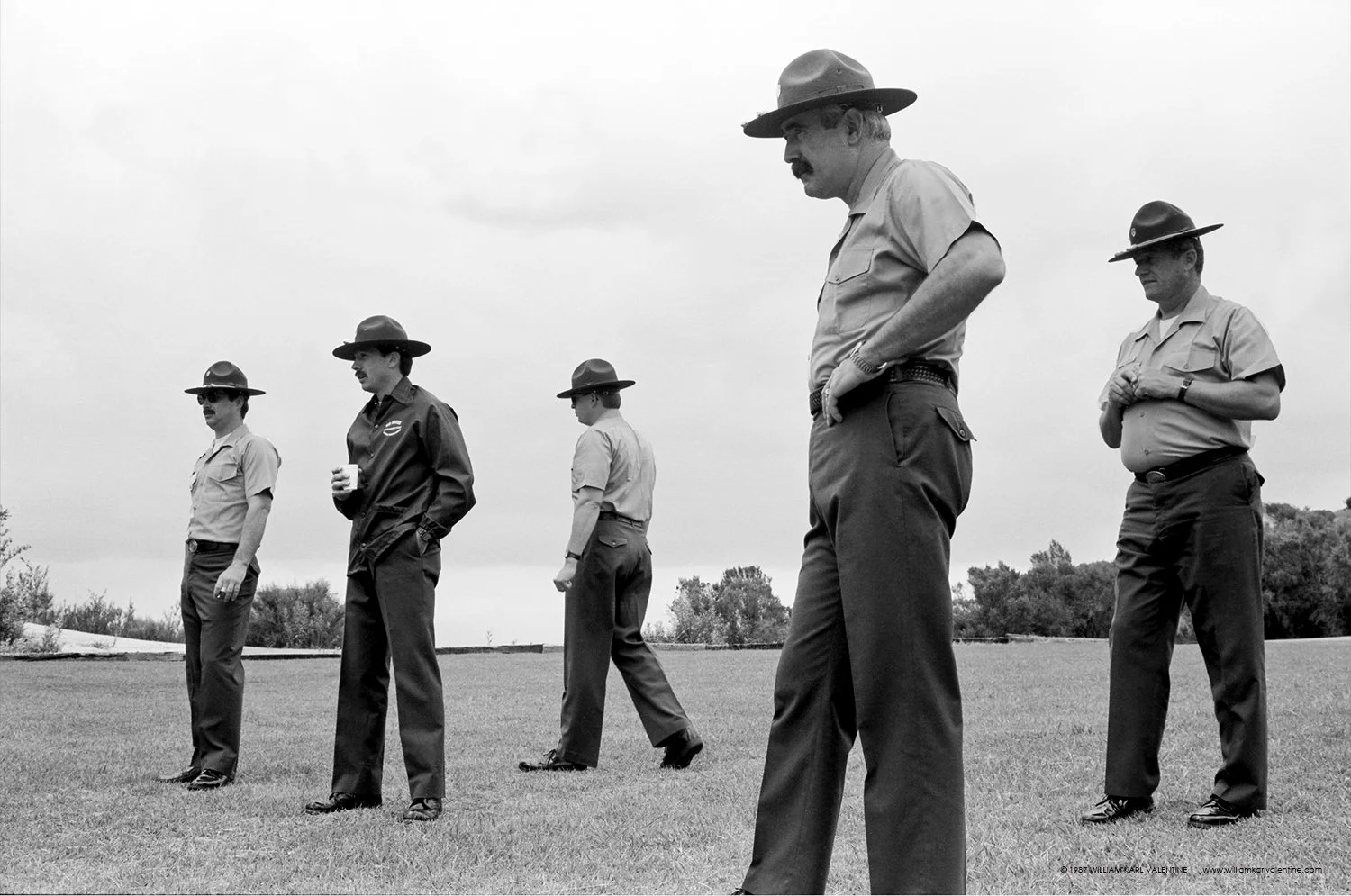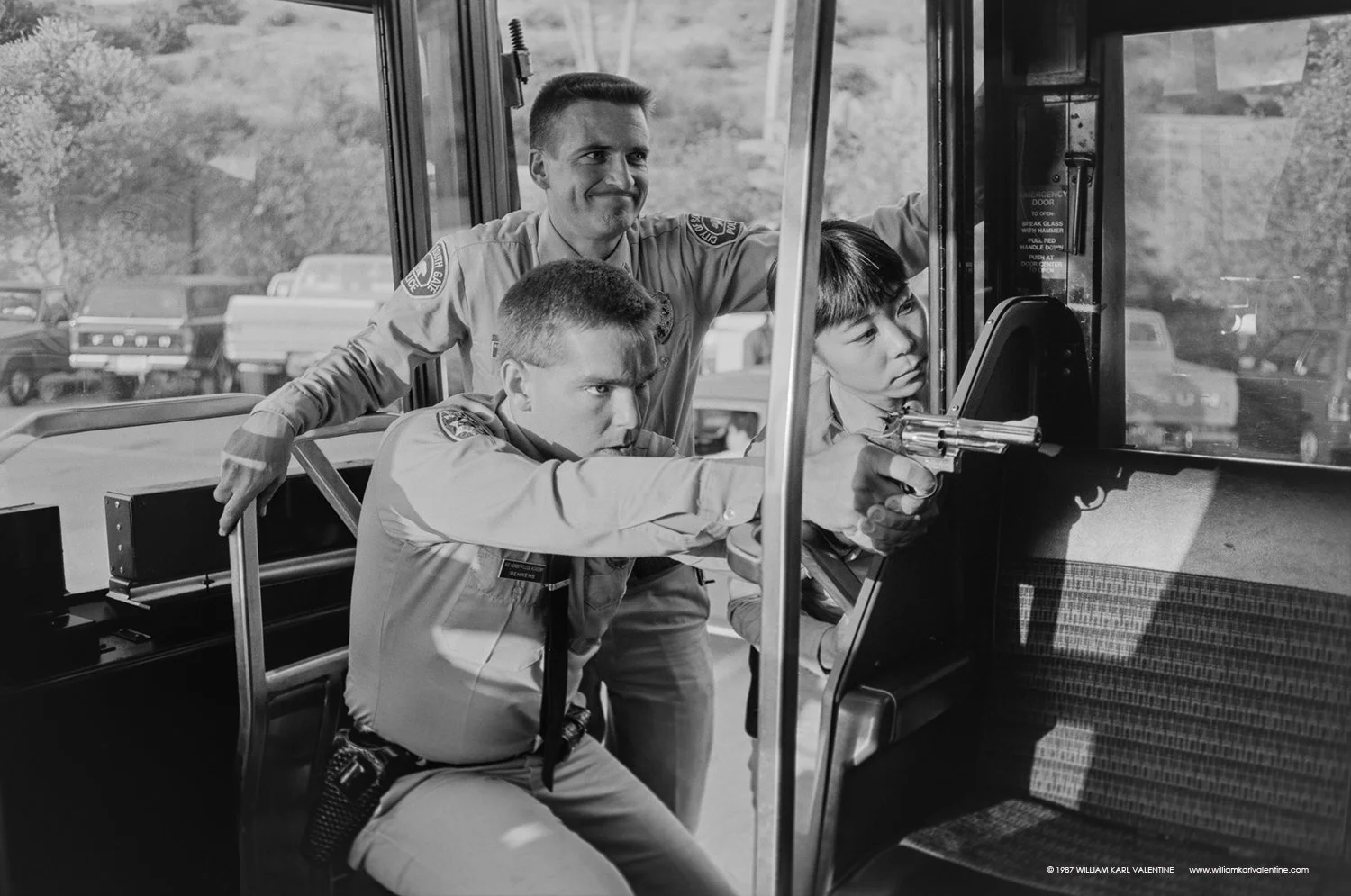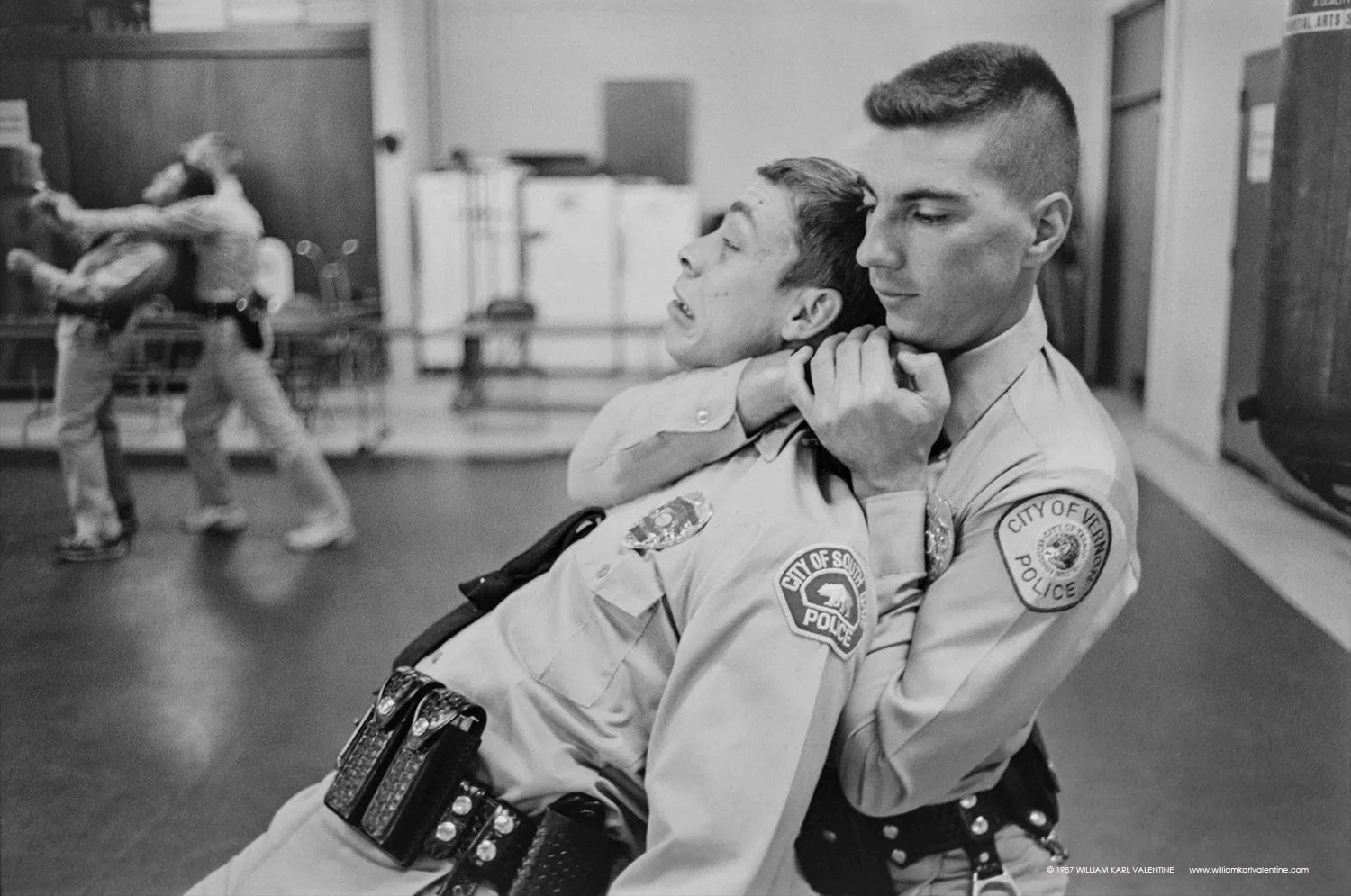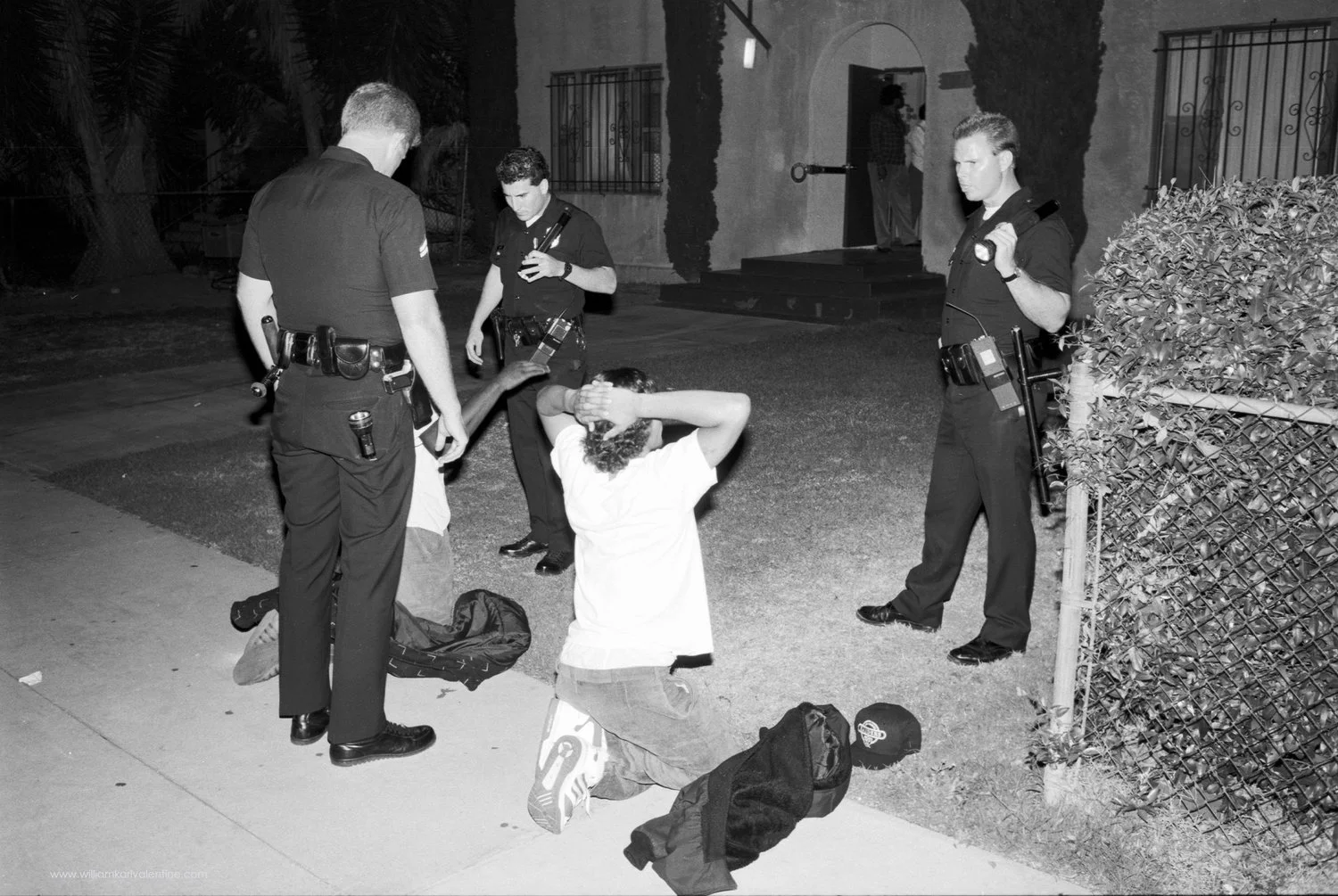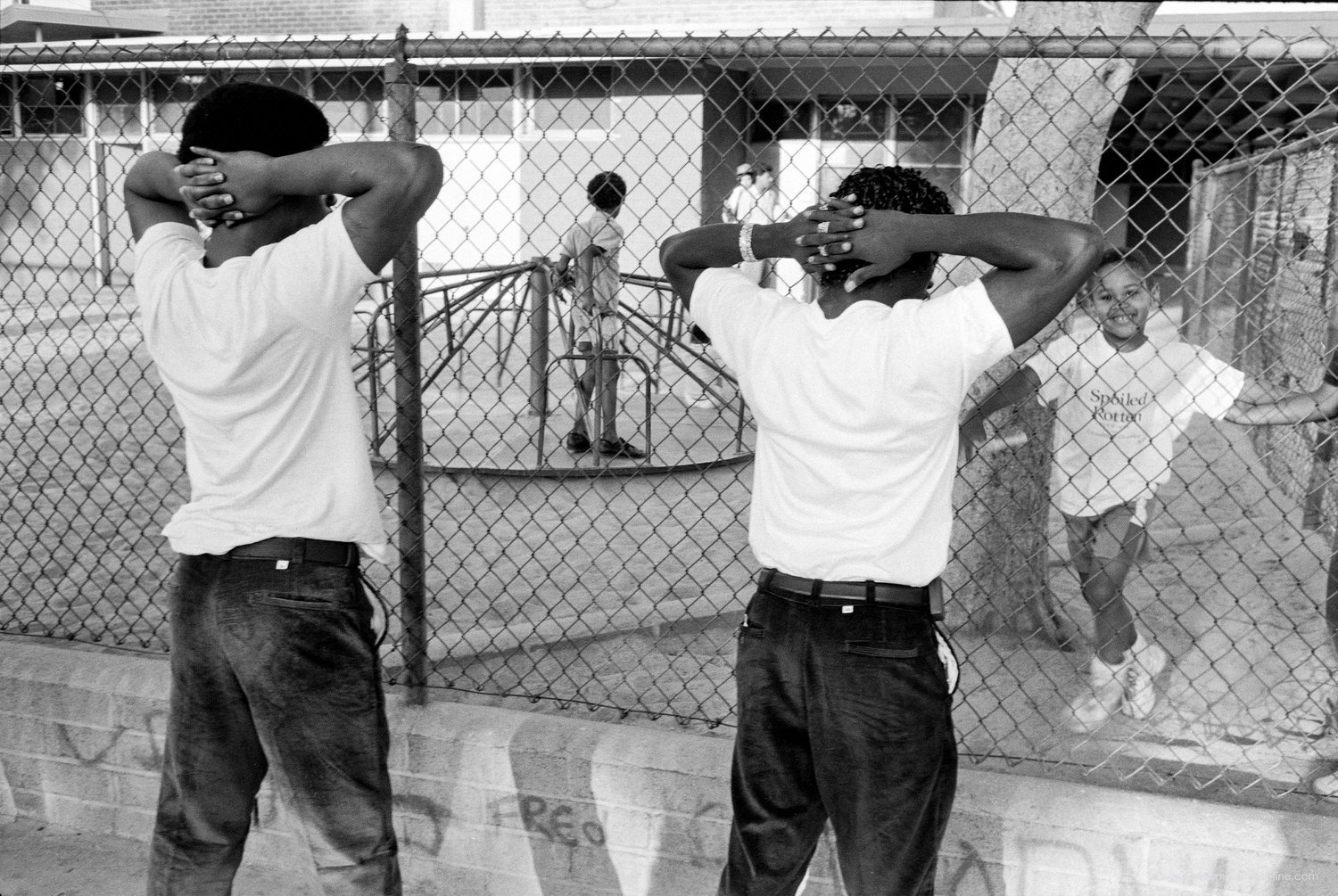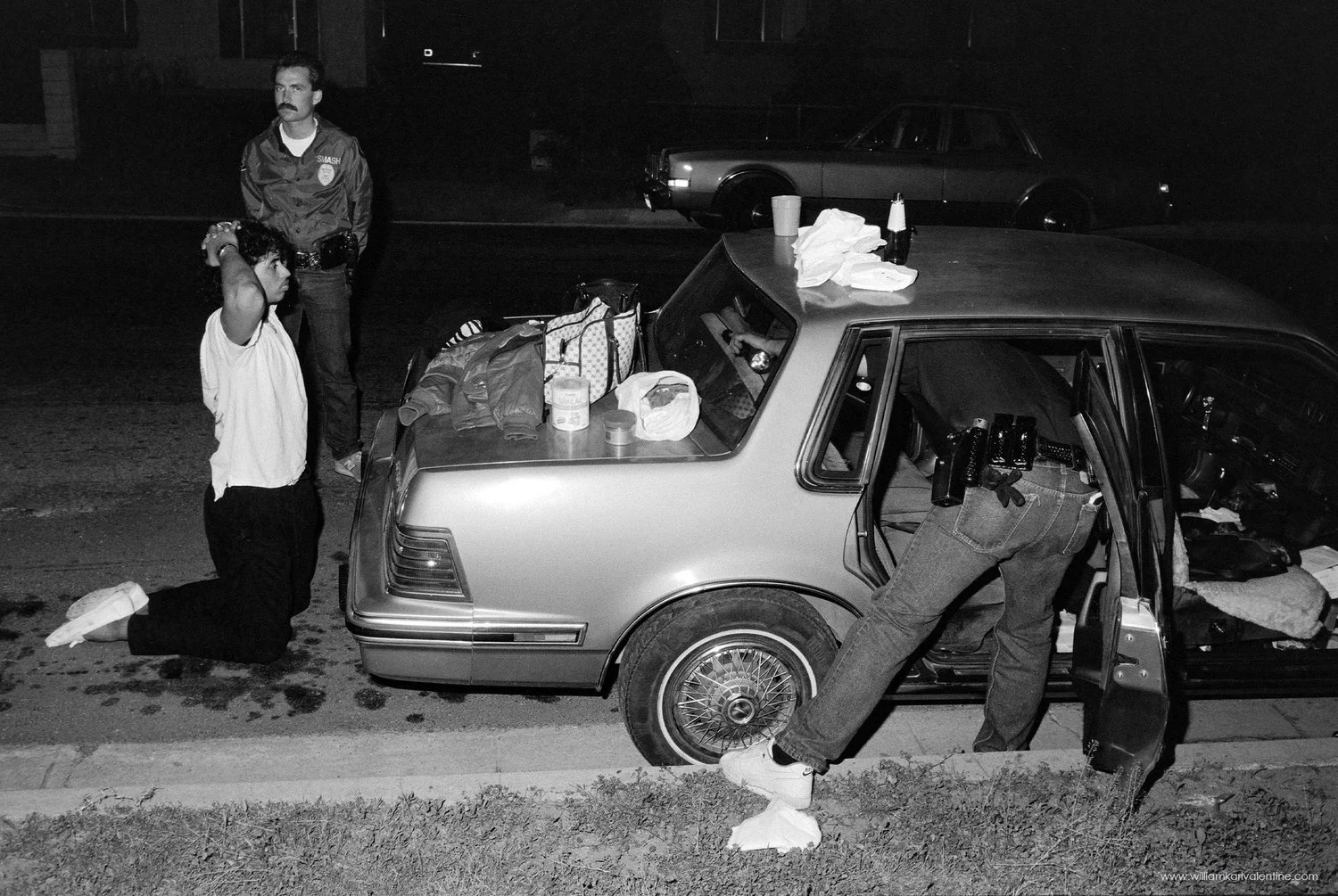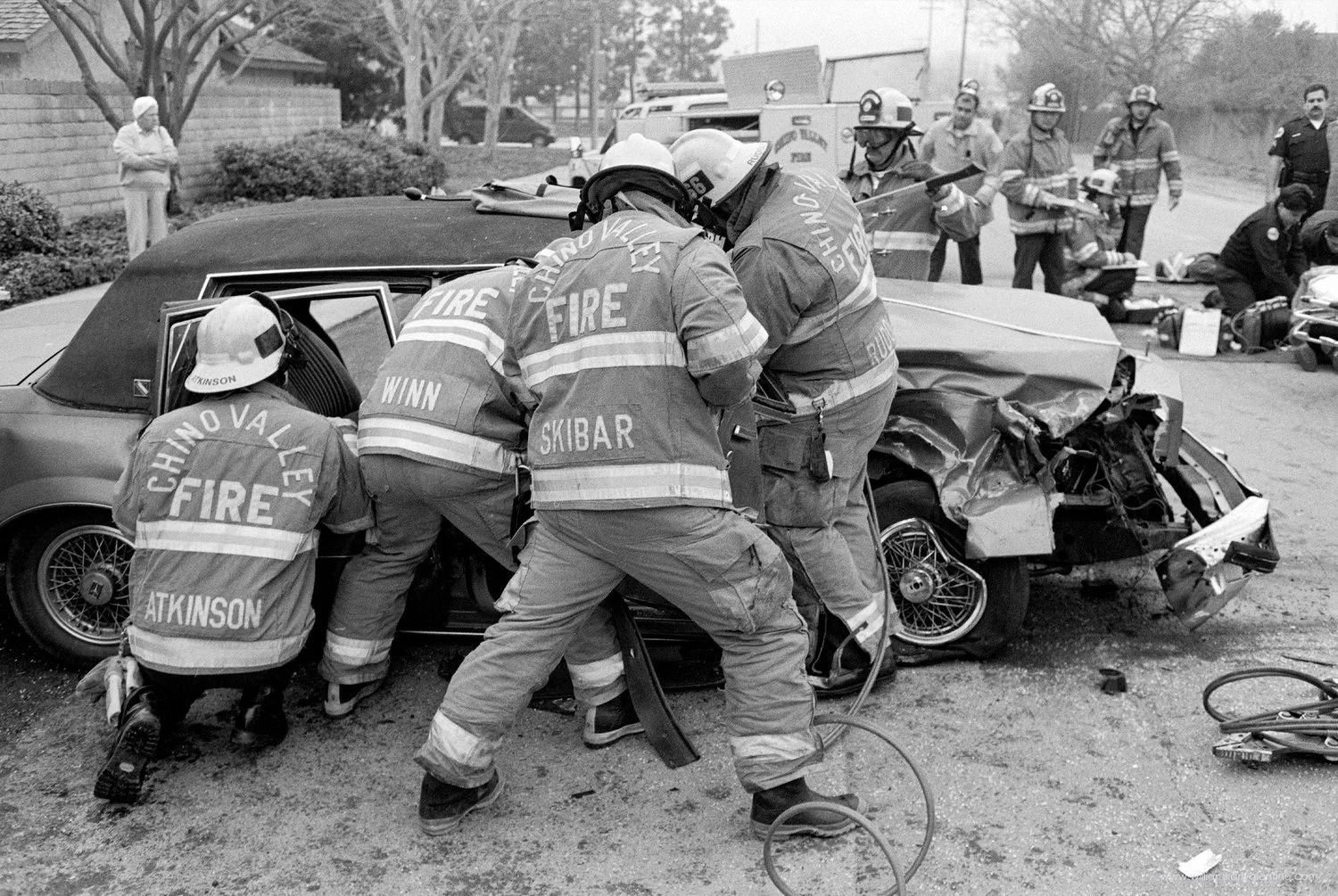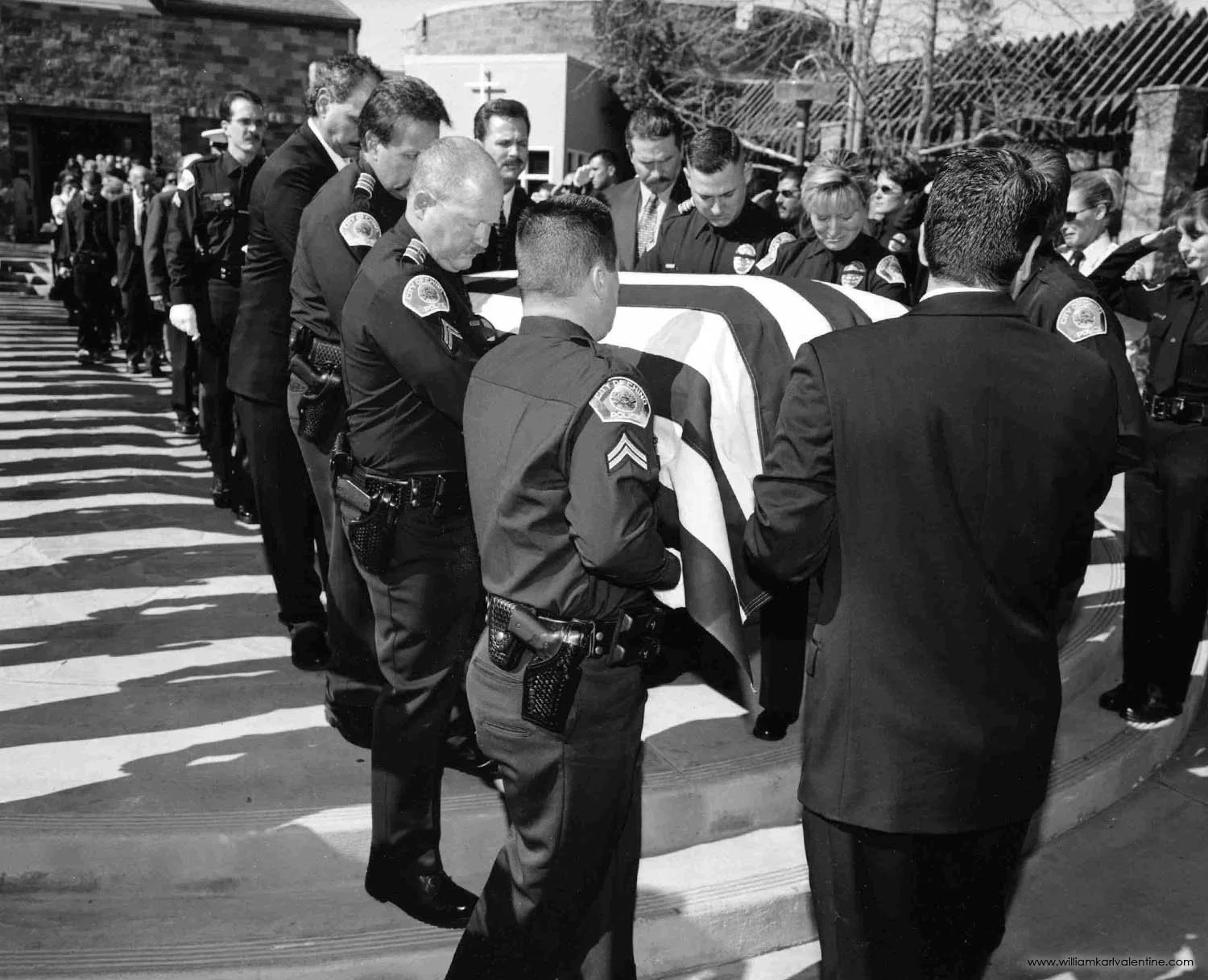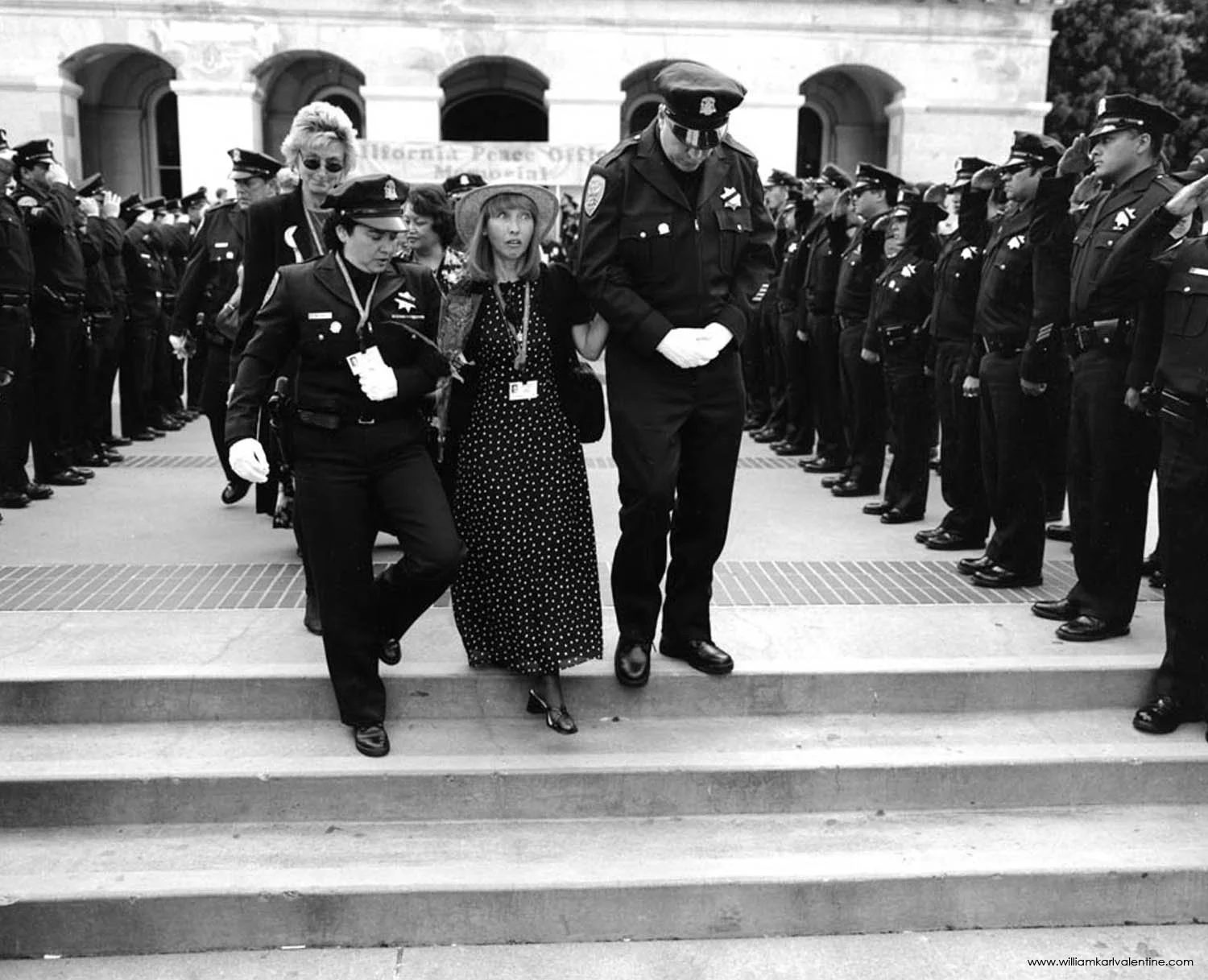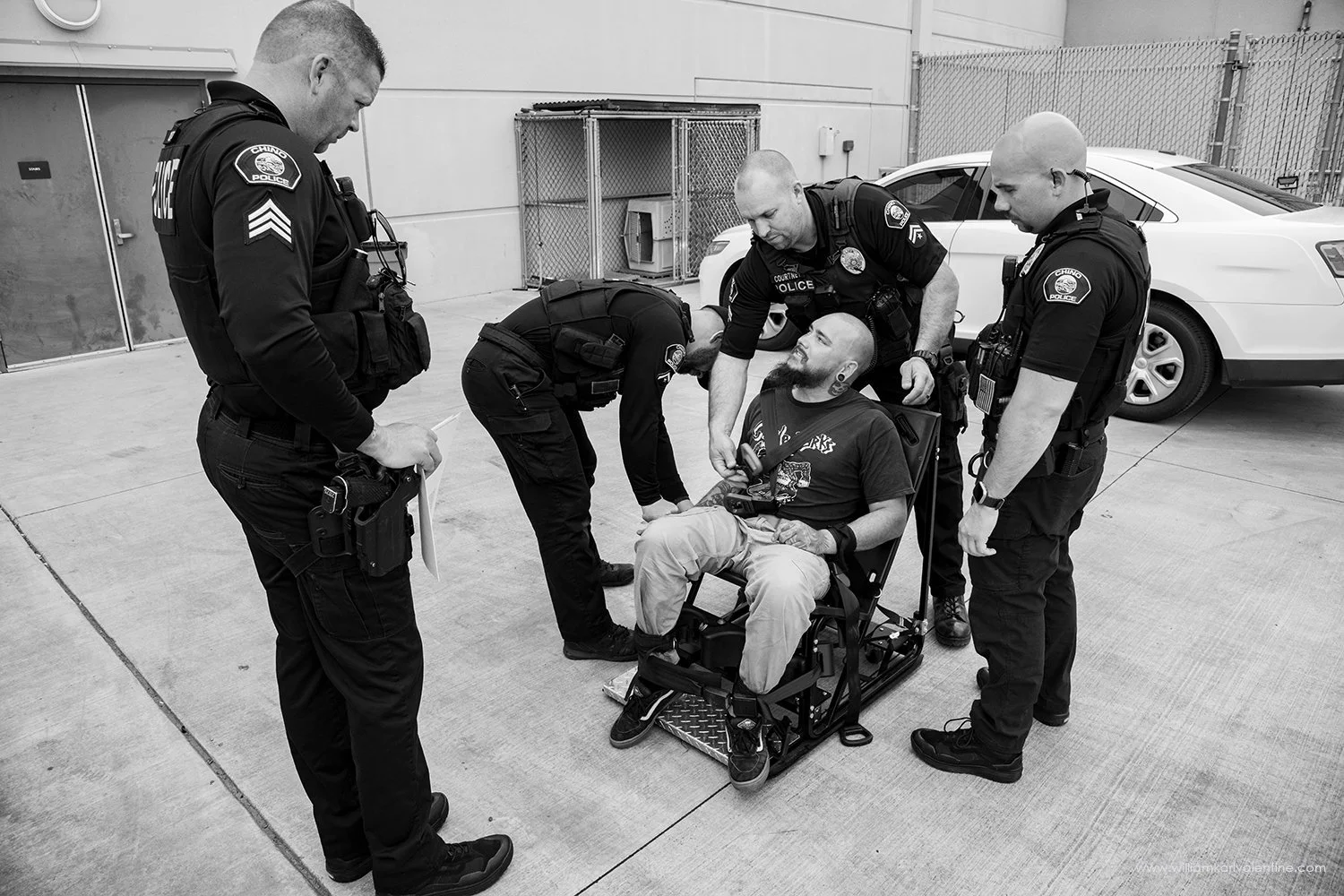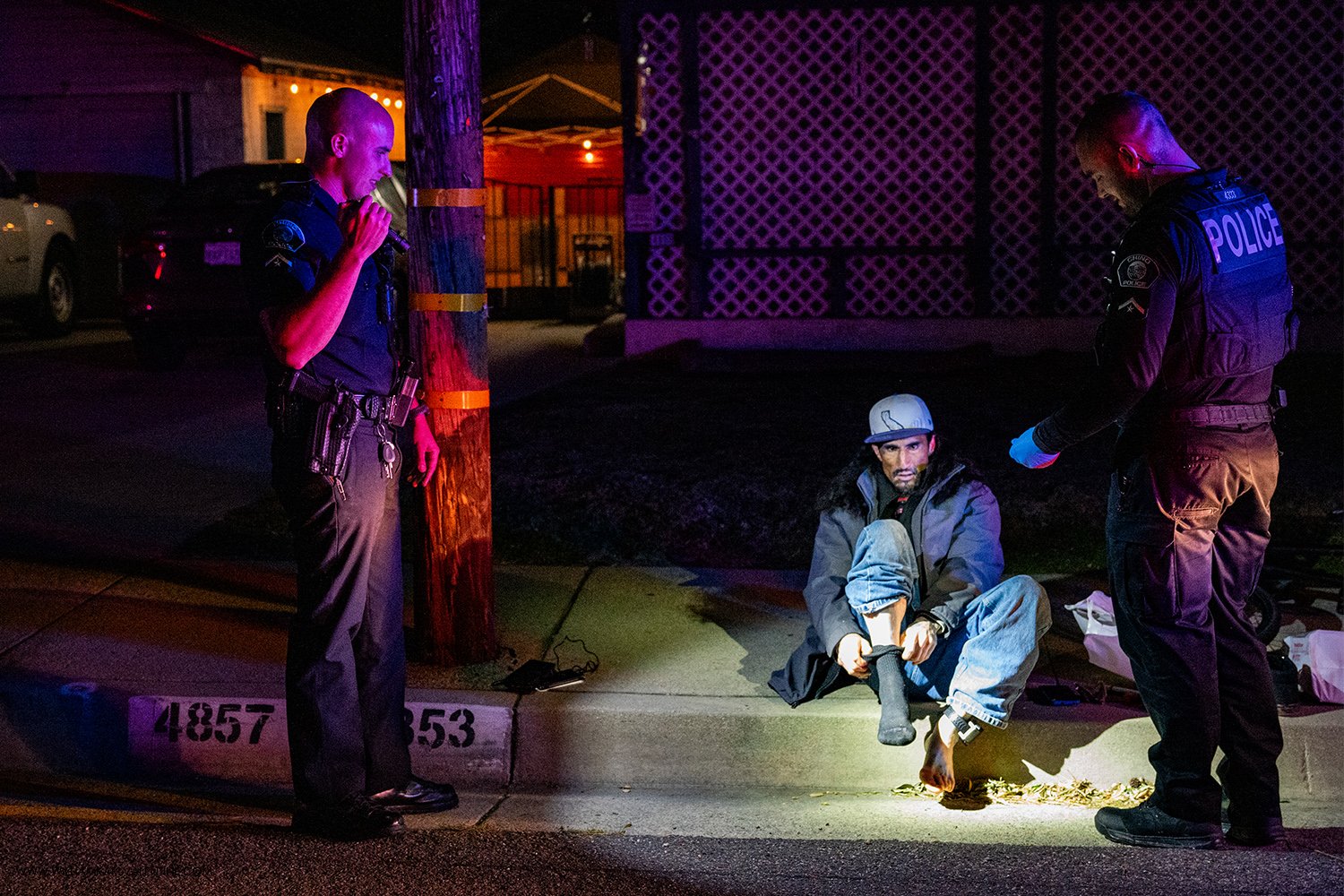The Collective Law Enforcement Portfolio - William Karl Valentine
Building the Curator - Photographer Relationship by Becky Senf June 2024
The Collective Law Enforcement Portfolio - William Karl Valentine
I began photographing the Pasadena Police Department in 1985 when I was a photography major at Arizona State University. The portfolio started as a documentary project for a class over spring break. My dad was a Reserve Officer with the department and was able to make the arrangements for me to ride along and photograph officers working.
My first night I rode with a sergeant I knew well and who is also a good photographer. He got me acclimated to being out in a police car on patrol and made sure everyone knew who I was and why I was photographing. I also knew many of the officers who were my dad’s friends. The first night I photographed a suicide scene from a distance and made a few portraits around the station. Those images were basic, but I quickly realized I liked being in a police car and there was great potential in the project. I went out photographing most the nights I was home on break
When I returned to ASU my photographs were well received and I knew I wanted to continue the project regardless of whether it was for class credit or not. I spent most of the following summer around the police department. I eventually became a Technical Reserve Officer, and I would volunteer in the Department’s Photo Lab during the day before going out to photograph at night.
The 1980’s were the height of the rock cocaine era in Southern California when the street gangs grew to prominence. In 1985 Pasadena had one of their most violent years on record with 29 Murders and over 700 robberies, mostly in the Northwest section of the city. Denver Lane Bloods and Raymond Avenue Crips battled over the drug sales turf and drive-by shootings were common. I had access to photograph almost anything I wanted, from undercover drug buys, to search warrants, special events like the Rose Parade, and obviously routine patrol. In all I spent over 1,000 hours in the field photographing and the portfolio was my graduation exhibition at ASU.
Through the processes of documenting police work I discovered I liked it a lot. I liked being outside an office, that no day was the same, and the goals of the profession. Before I graduated I decided to become a police officer. I had also recognized a law enforcement career would allow me the needed flexibility to also continue my photographic career.
I entered the Rio Hondo Police Academy in the spring of 1987. Several weeks into the Academy, the staff asked for a volunteer to be class photographer and I made sure I got it. I had inside access again to photograph. I documented as much as I could while also fulfilling my duties as a recruit and developed a sound small portfolio of that experience. Training dictates how officers do their job, so it is an important part of understanding the profession.
Out of the academy I was hired by the Chino Police Department (California). I worked there for 20 years before being medically retired. I worked uniform patrol except for three years I was a Detective. I developed expertise in several things including Gangs and Vehicle Theft investigation. I received my department’s Meritorious award for talking a person out of killing himself with a firearm. During my time working I photographed on patrol as much as possible, but it was clearly not my primary role. The hardest thing I photographed while I was a Detective were the three services for my who was killed in the line of duty in 2000. I photographed the actual funeral then the State and National memorial services the following year. During my career I also rode along with LAPD gang units to build my expertise as well as to photograph.
Two years ago, Chino PD’s current Chief of Police asked me to consider coming back out on patrol to photograph again and I immediately agreed. I had been looking for the opportunity to document how things are in the profession currently for a while and the timing was finally right. My fourth section of this combined portfolio documents modern day policing including advancements with technology, changes in protocol, and the impact of Fentanyl. It is comprised of photographs from Chino PD as well as other images of law enforcement I made while photographing for other projects. The submitted portfolio comprises only images from Southern California from 1985 to present.
Over the last four decades I witnessed, and in many cases documented, the changes within the law enforcement profession. As an Officer, I handled most every type of call for service, even a response to the 1993 Los Angeles riots. I dealt with people under the influence of stimulants, PCP, and opiates plus I have interviewed fentanyl addicts of today. I saw what proactive approaches worked to provide public safety and I recognize where improvements should be made today. I felt a public perception shift about law enforcement in the 2010’s and I have watched that sentiment morph into a villainization of the profession by individuals with political motives or agendas in the last four years. The reimagining of law enforcement recently has led to increased crime and a deterioration of quality of life in many major American cities. By combining these related portfolios, I hope to provide a visual reference point which can be used by others to create a productive dialogue on how to improve our current approach to the criminal justice system and foster a better understanding of the people in the law enforcement profession.
This is a Temporary Portfolio - ALL IMAGES © 1985-2024 WILLIAM KARL VALENTINE
Any person photographed in custody should be presumed innocent since the incent documented is prior to any criminal proceedings for those subjects.










